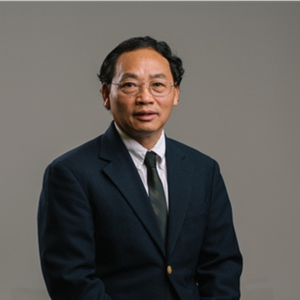New anti-viral aircon filter catches and kills the COVID-19 virus

Categories: Energy and sustainability Chemical and healthcare
Coronavirus disease, commonly referred to as COVID-19, is caused by the severe acute respiratory syndrome coronavirus 2 (SARS-CoV-2). Its rapid spread has caused a global pandemic that continues to threaten public health all over the world – according to the World Health Organization (WHO), as of 6 August 2020 there are over 18 million confirmed cases in over 200 countries, areas, or territories. The rapid spread of the disease is largely related to two key factors: carriers being highly infectious while asymptomatic, and the ability of the virus to survive in various environmental conditions. What’s more, while human-to-human transmission of the virus has been known for a while, scientists recently confirmed significant airborne transmission of SARS-CoV-2 via air-conditioning systems. As more and more offices, schools, and sports centres start to reopen, it’s increasingly likely that there will be a second wave of infections caused by this airborne transmission through central air-conditioning systems.
Problems with current air conditioning filters
Traditional air-conditioner filters that use fiberglass or aluminium meshes are only capable of filtering out large particles such as lint and dust. Even the best high-efficiency particulate air (HEPA) filter can’t trap all of the viruses, nor can it kill them – a significant percentage of the viruses will pass through these HEPA filters and circulate back into the rooms. To make matters worse, because aircon is typically turned on and off every few minutes, some of the trapped viruses on the HEPA filter will be blown through the HEPA filter into the rooms with the next wave of air. Due to the long-surviving time of SARS-CoV-2 in air, these particles linger for anywhere up to several hours.
How to stop a virus with air conditioning
In short: heat. Most viruses or any biological species, including SARS-CoV-2, have a low resistance to high temperatures. It has been demonstrated that the time needed to inactivate this virus is shortened to just five minutes when the surrounding temperature is increased to 70℃. Therefore, if the filter in an air conditioning unit can be heated to an even higher temperature (up to 200℃, for example), then any SARS-CoV-2 particles circulating through the air will be killed upon contact.
Our nickel (Ni) foam-based filter does exactly this – it can catch and kill the viruses instantaneously. Importantly, while we studied Ni foam, we are not limited to it. Any porous material that can be electrically heated can be used for this purpose. Taking this further, any material that can conduct heat very quickly should serve the same purpose.
How did we develop the heated filter?
Commercial nickel foam is widely available and is used for energy conversion and storage applications in our lab. It’s electrically conductive, mechanically strong and, perhaps most importantly, it’s highly porous. The foam has randomly located pores that are between 50 and 500 µm in size that meander from one side to the other. This results in a very large surface area that can effectively catch particles in the air as they pass through the filter. We realized that nickel foam had potential to be a good filter for catching and killing SARS-CoV-2 in air-conditioning systems, but it proved extremely challenging to design since the resistivity of Ni foam is too small for us to heat it to 200℃. When the resistance is too small, electrical current passes through it without generating an appreciable amount of heat.
Thankfully, we established a workaround to increase the resistance. We designed the filter to be heated electrically – fabricating a filter device consisting of folded pieces of Ni foam in multiple compartments, connected electrically in series to efficiently increase the resistance to a manageable level. This allowed us to achieve that desired temperature of 200 ℃.
We made sure that the air temperature didn’t increase appreciably after going through the heater, so the extra load to the AC system is negligible.
Potential applications
We’re aiming to do a phased roll-out of this filter, beginning with high-priority venues where essential workers are at a higher risk of exposure – we’re particularly focused on hospitals and healthcare facilities, as well as public transit environments such as aeroplanes. The nickel foam filter will help people in three key ways: it will improve the safety for frontline workers in essential industries by minimizing the risk of SARS-CoV-2 exposure; allow non-essential workers to safely return to public workspaces by reducing their risk of exposure; and allow the general public to more safely re-engage with their own communities, especially students back to schools, through the creation of mobile air-purification devices that can maintain clean personal air space.
Potential impact
Deploying these novel filters and purification units should have a dramatic impact on both essential workers and the general public during the COVID-19 pandemic, and reduce the risk of exposure to other airborne highly infectious agents, both known and unknown. When testing the filter against anthrax in the lab, for example, the filter killed 99.9% of the spores. Expanding things further, this technology should also provide safe bioagent protection gear, helping to eliminate any potential bioterrorism threats from airborne infectious agents. The air purification and disinfection system derived from this Ni-foam-based heated filter should hopefully help society to combat future cases of flu, pandemics, and various other bioagents.

More on the author, Zhifeng Ren
Zhifeng Ren, PhD, is an MD Anderson Chair Professor of Physics at the University of Houston, and the director of the Texas Center for Superconductivity at the University of Houston (TcSUH). He has published more than 540 peer-reviewed journal papers and was awarded more than 50 US patents, which have generated 72,000 citations.



